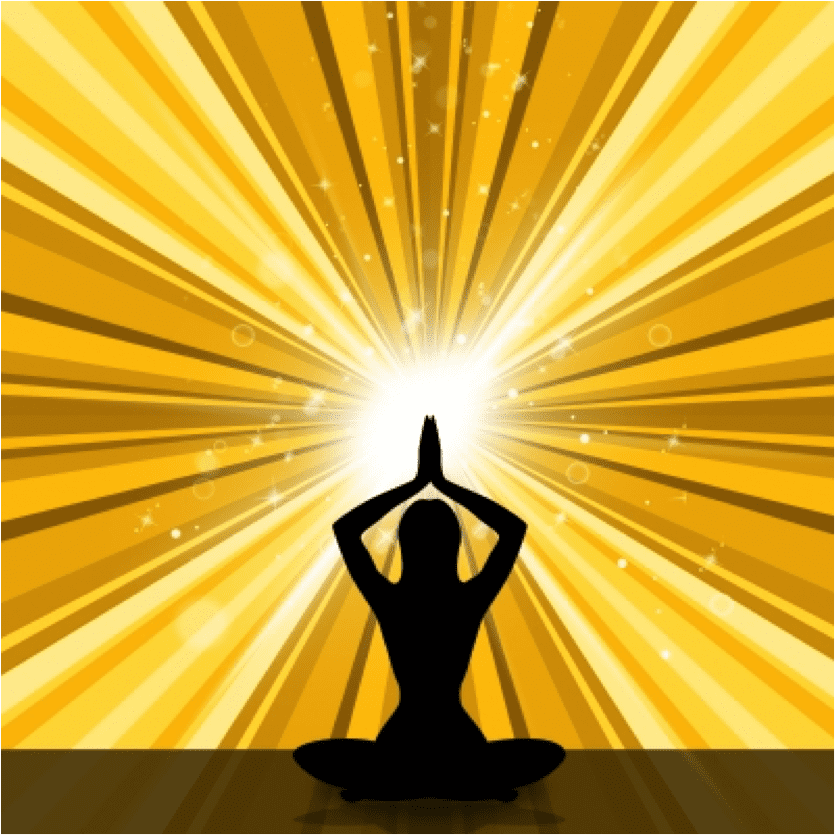Yoga is a spiritual practice meant to unite or integrate our whole being—mind, body and spirit. For many beginning yoga practitioners, these aspects of ourselves may not be working together and in some cases may actually work against each other. As yoga demonstrates, the greater the separation between mind, body and spirit, the greater the degree of physical and mental dis-ease. The more we are able to connect these three aspects of being, the more authentic and aligned are our thoughts, words and deeds. In essence, yoga provides us with practices that support our passage through the transformation cycle from dis-ease to ease and enlightenment.
Traditionally, yogis speak of the transformation process as occurring at three levels of awareness—first you feel better, then you feel worse, then you feel different. Think back on a behaviour you attempted to change (quit smoking, lose weight, speak up more often, think before you speak, stop judging others, etc.). As you reduced or stopped the limiting behaviour, did you find yourself initially feeling better?
Over time, did you find it becoming more challenging (boring, frustrating, etc.) to stick with your change plan? By sticking to your intentions, were you able to see the limiting belief that was the source of your limiting behaviour (“I smoke/drink to relax”, “I am not worthy”, “I eat to comfort myself”, “I talk a lot to cover up my nervousness”, etc.)?
And finally, were you able to release the limiting belief you held about yourself and replace it with a new empowering belief? If this progression occurred for you, then you discovered a new sense of yourself, a new identity. However, if you merely attempted to change your behaviour without also changing your underlying beliefs about why you behaved that way, very likely the old behaviour returned or you replaced it with a new limiting habit (instead of smoking, you now overeat or chew gum, etc.).
In essence, it takes all eight limbs of yoga to move us through the complete transformation cycle illustrated above. We start first with our own behaviour by practicing the yamas, which guide us toward ethical actions—loving kindness (do no harm), truthfulness, abundance (non-stealing), wise energy usage (respectful sexuality), self-reliance (non-greed, non-attachment). To further our self-discipline and spiritual practice, we move on to the niyamas—cleanliness (energetic & physical), contentment (acceptance of what is, ease), effort (impassioned discipline, intention), self-awareness (self-observation in our study of spiritual philosophy), surrendering to Life (Source/Creator/Universal Life-force energy, etc.).
Strengthening our personal integrity and self-discipline are vital to our ability to strengthen our physical body through the asana (postural) practice, yoga’s third limb. Our body houses our spirit and is the vessel through which we enact our daily lives. Thus, the discipline (effort and ease) and concentration developed during regular asana practice fortifies the vessel. The same applies for the fourth limb, pranayama, where we learn to regulate our breath as a means to gain mastery over our breath, our mind and our emotions.
These first four stages of Patanjali’s ashtanga yoga concentrate on refining our personalities, gaining mastery over the body, and developing an energetic awareness of ourselves, all of which prepares us for the second half of this journey, which deals with the senses, the mind, and attaining a higher state of consciousness. Mara Carrico
The fifth (Pratyahara) and sixth (Dharana) limbs of yoga further enhance the development and habituation of discipline and concentration. Pratyahara, moving our awareness inside by detaching from our sensory experience of the external world, allows us to objectively observe our limiting habits (cravings). Without such self-observation and awareness, we would stay unconscious of our habits and remain unable to change. Dharana further strengthens our powers of concentration by focusing on a single object (body part, breath, image, silent repetition of a sound), which slows down our thinking process; that is, our monkey mind or mental distractions. Over time, our new habits of discipline and present moment concentration lead us naturally to experience meditation (the seventh limb).
Asana is meditation on the body, pranayama is meditation on the breath and subtle energy currents within us, and then we work with the mind directly, with the ultimate aim of transcending body and mind and experiencing the higher Self. Swami Karunananda
Meditation or dhyana differs from dharana in that we move from a state of single-pointed focus on an object to uninterrupted concentration where we are “keenly aware without focus.” In this state of meditative consciousness or present moment awareness, the mind has been stilled or silenced. When asked what he gained from meditation, the Buddha said, “Nothing!” “But let me tell you what I lost—anger, anxiety, depression, insecurity, fear of old age and death.”
Samadhi, the eighth limb, is often referred to as the state of bliss or enlightenment. More concretely put, it exists when we liberate ourselves from our limiting perspectives (desires, thoughts, feelings, behaviours). We are wholly and fully present without a point of view. Samadhi reveals to us the underlying oneness of the universe and thus, our true nature—“I am consciousness.”
For more on transformation and yoga, click here.






